
It was a highlight of my 2.5-month overland trip through West Africa: visiting the fish market in Nouakchott, Mauritania. A fascinating place bustling with activities, this is one of the largest markets of its kind in the whole region. I spent several days photographing what is going on on the nearby beach.
Even though it is only a short distance from the capital, visiting the so-called ‘Port de Peche’ feels like stepping into a different world. The pungent smells, the noise of the seagulls hovering over the Atlantic, the hundreds of people who don’t want you to stand in their way. This fascinating market is located right on the beach, with brightly painted pirogues as far as the eye can see.
The rich fishing waters off the West African coast are a vital source of income for the region. It attracts many hard-working people all trying to claim their share of the profits. From the porters frantically racing back and forth to unload the precious cargo, to the artists further up the beach patiently decorating the boats with colourful football logos.
There is a huge local economy playing out around the fishing market. If you happen to be in Mauritania yourself, I highly suggest to check it out.
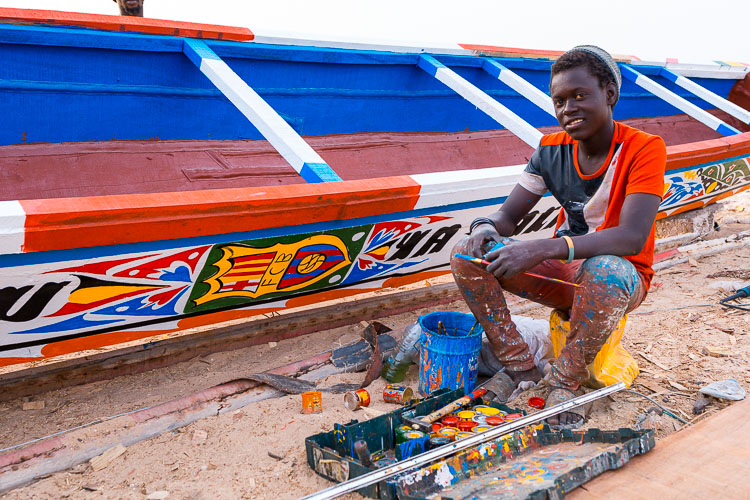
Surprisingly fishing in Mauritania is still done the traditional way. Fishing crews head out on basic wooden pirogues scouting the oceans without any modern radars and other equipment. Most of the fishermen are from Senegal and they are some of the most skilful in the entire West Africa.
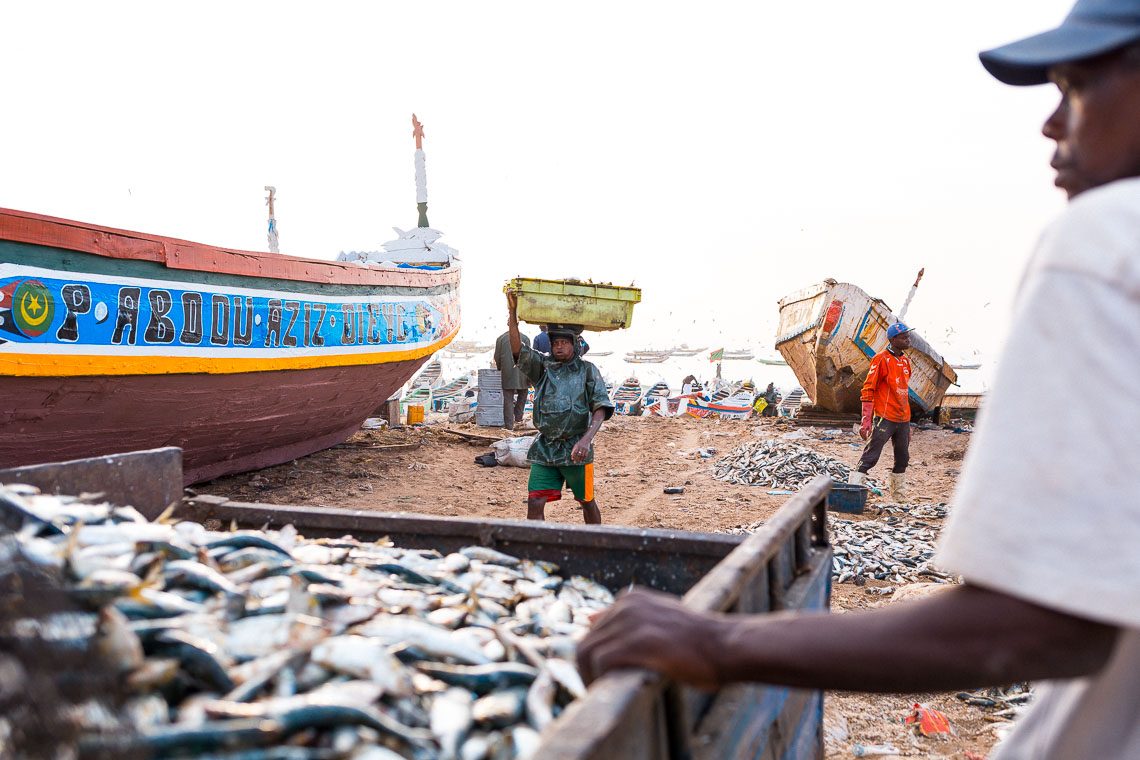
I visited the market several times around the end of the afternoon. It’s the best time to observe the boats returning to shore with their catch of the day. Their arrival triggers a gigantic chain of events that provides not only food but also work for entire families.
Being the only white guy around, I explored each corner of the beach on my own, discovering new things every time.
Zooming in
The beach can be overwhelming at first. There are many things going on around you and sometimes you have no idea where to look. My tip in that case is to then zoom in and focus on individual cases. Like this one example of the man below, wading knee-deep in the water. Turns out he is scavenging for spilled fish. A minor effort compared to the thousands of kilograms being hauled in each day, but significant enough to feed his whole family.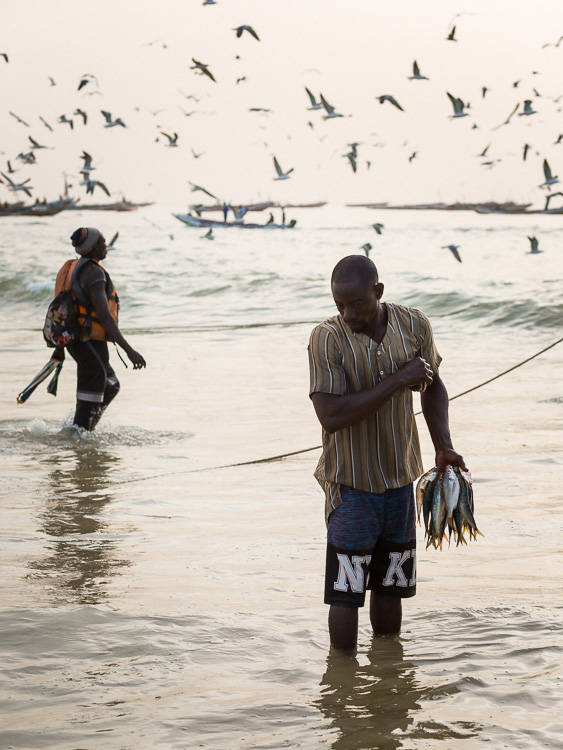
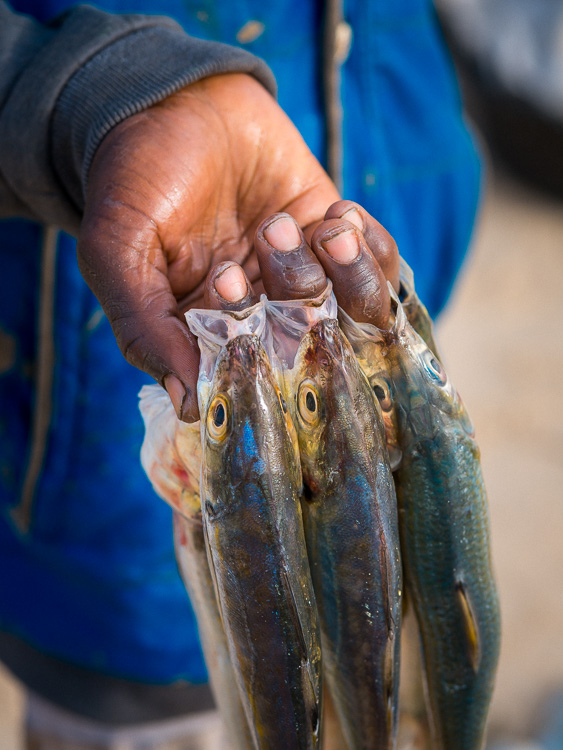
Jackpot
One day when I was visiting it is obvious they had hit jackpot. Fish is being sold not by the bucket, but by the ton. Beat-up cars dating back to the stone age are driving up and down non-stop, some so overloaded that the bottom of the car almost hits the ground.
The sheer volume of sardines being hauled in front of my eyes is really impressive. Ladies on the beach stand by as most fish is diverted to nearby processing factories for export.
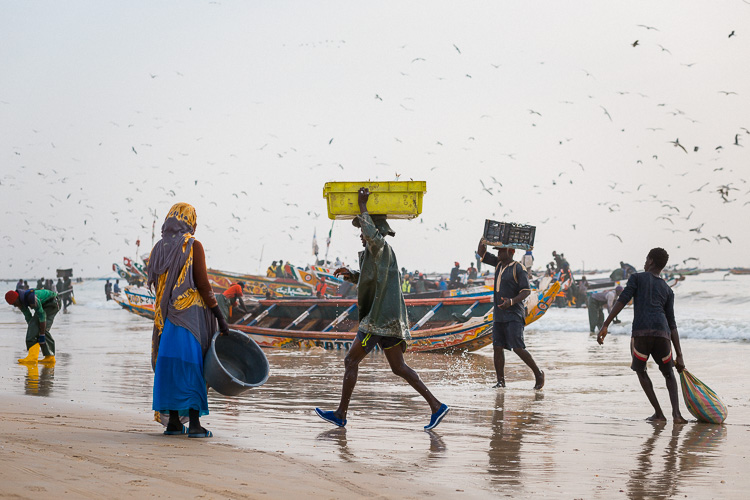
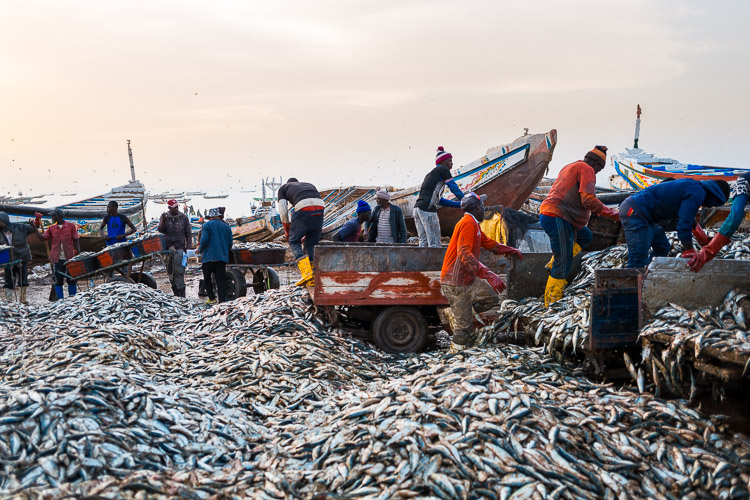
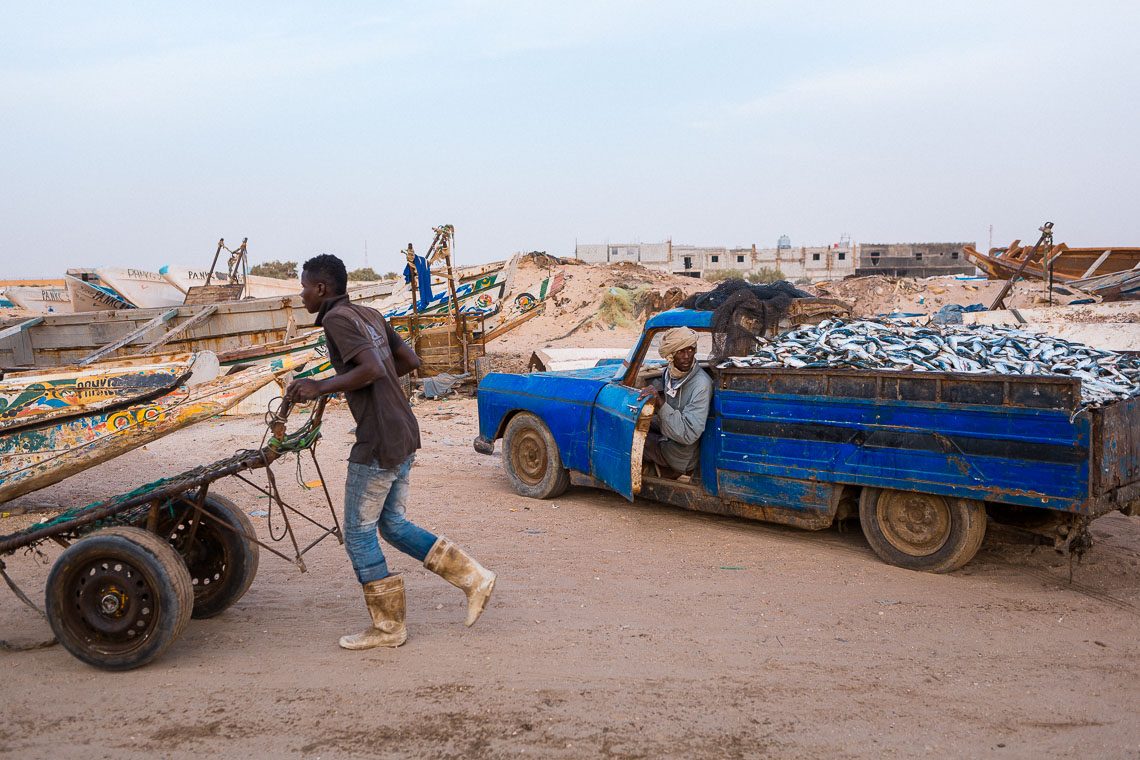
But as each day comes to an end, so does all the buzz at the market. When all offloading is done, the pirogues are cleaned and dragged ashore by crews of up to 20 strong men. Using just sheer muscle power, they place the boats safely away, ready for another trip later in the week.
CHECK THIS OUT: Riding the Iron Ore Train Across the Sahara
The market slowly turns quiet, the piles of fish disappear in the distance in the back of the pickups. As the sun moves behind the horizon, the mosques start their call to prayer. By this time all the workers have already gone home for a good scrub and clean. They will take some rest, after which the whole ritual will probably play over and over again for years or decades to come.
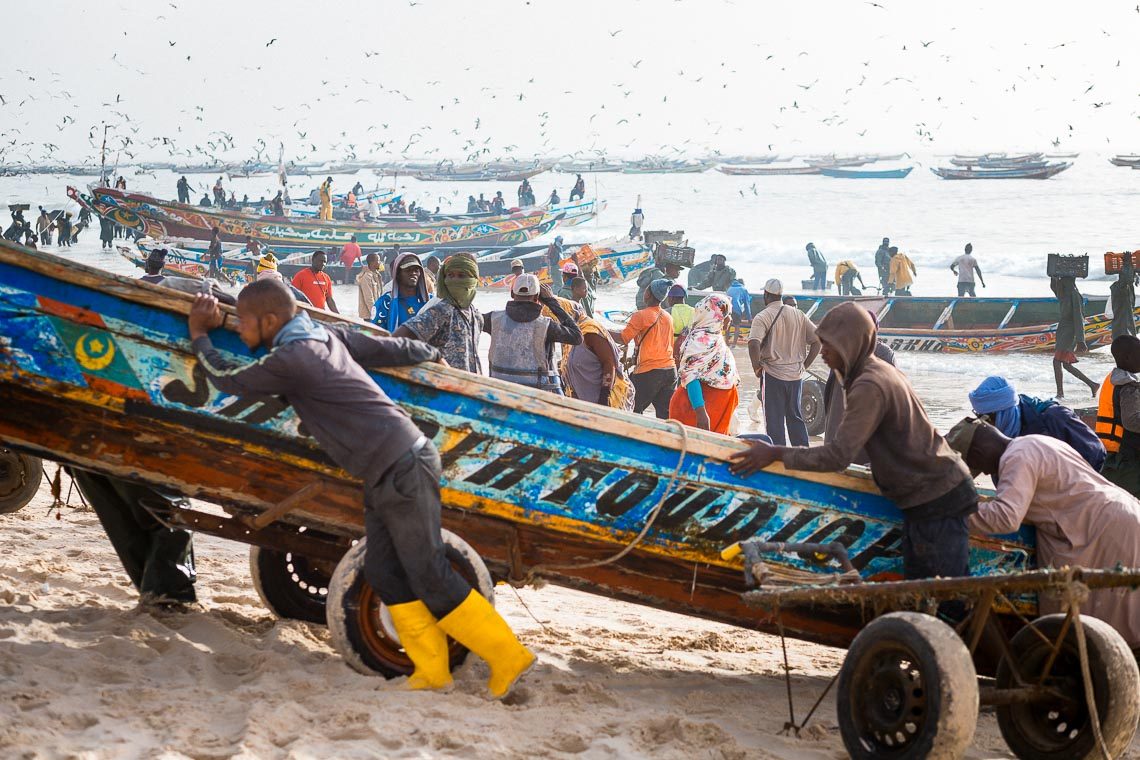
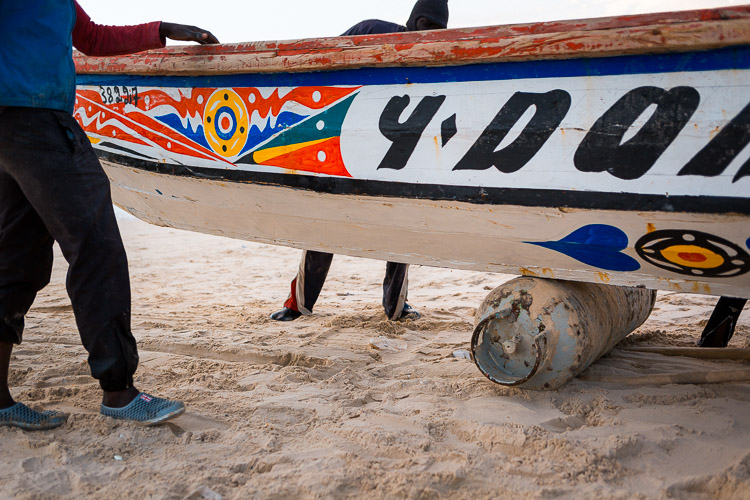
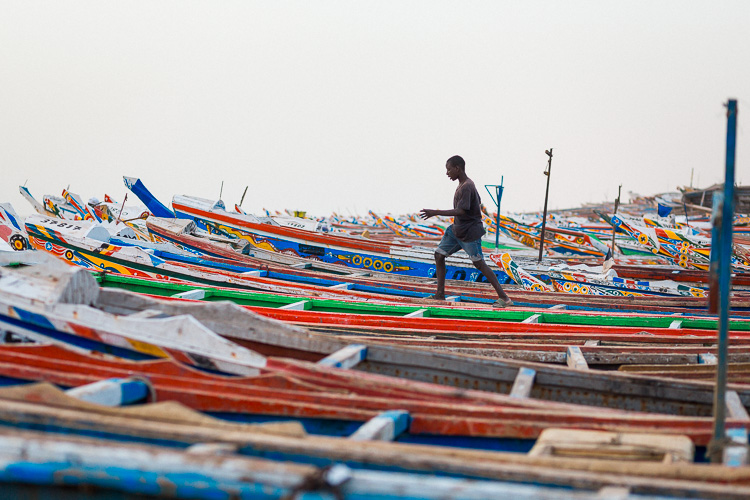
Photography tips
The Nouakchott fish market is an overwhelming and notoriously hard place to take photos. I encountered quite a lot of people who did not want to have their photos taken, which I compliantly respected. On the other hand there were also plenty of people who did not mind, some even insisted on me taking pictures.
My tip: if you want to take pictures at this market yourself, be aware not everyone is open for it. Make eye contact before taking a picture of someone, especially when you want to get close. When you find a group of porters that does not want to be photographed, it is best to just move on to another boat. Always remember that those at the beach are people working hard for a tiny income. They are not there to run a tourist attraction.
Despite these difficulties, I’m sure though that with the right approach and attitude it is possible to navigate your way through all the action and bring home some good pictures for memory!
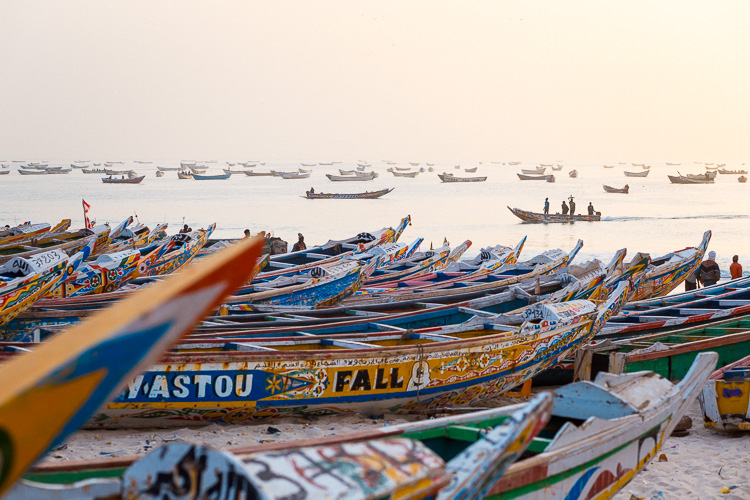
If you like to see even more of my pictures, why not have a look at my Instagram profile? And don’t forget to leave a comment and share this article with your friends!